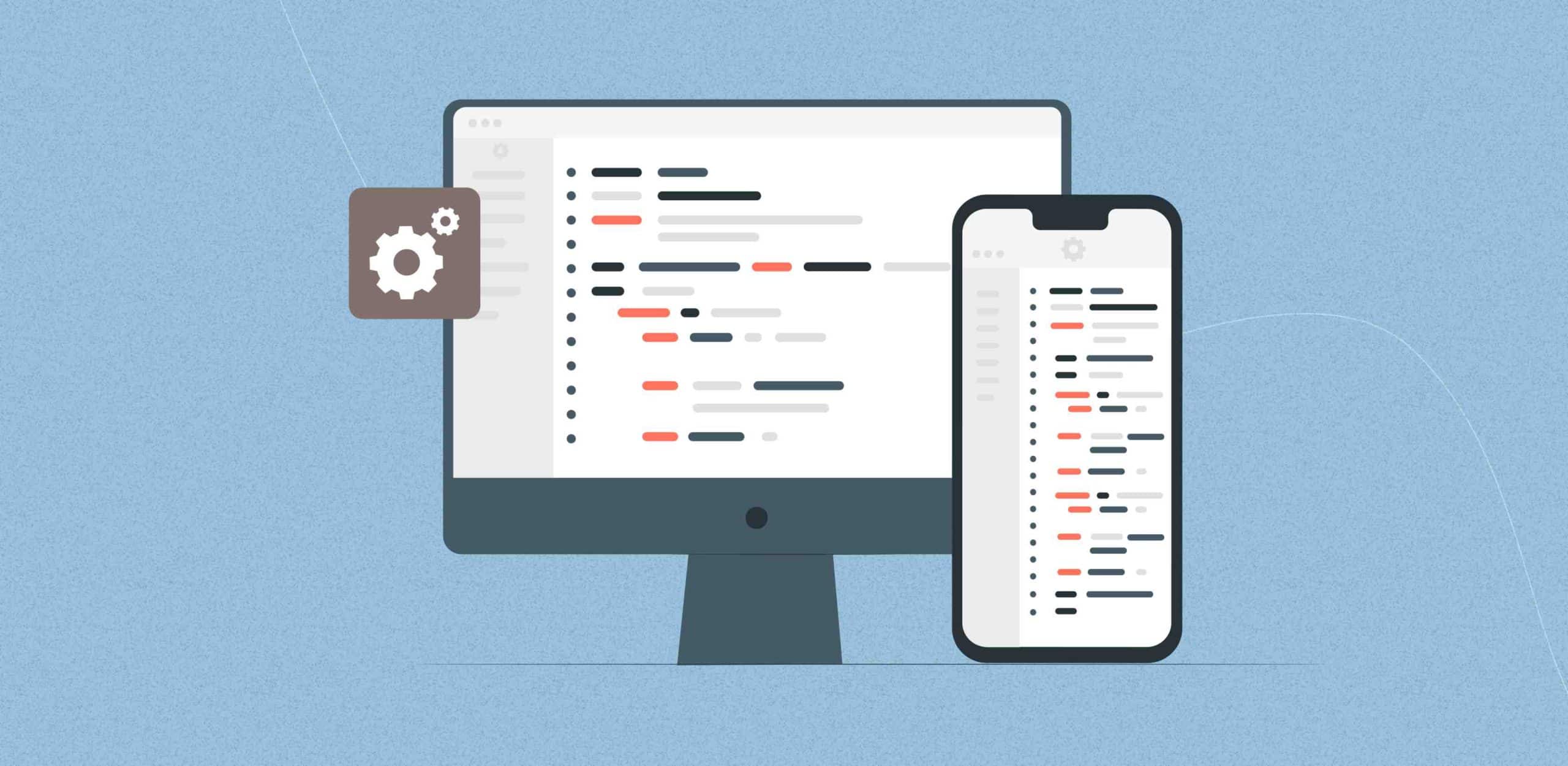Introduction
WebRTC app development is revolutionizing the way businesses and users connect in real-time. From corporate meetings to virtual classrooms and telehealth consultations, the demand for seamless, high-quality video communication has skyrocketed. At the core of this transformation lies WebRTC — a powerful, open-source technology that enables real-time audio, video, and data sharing directly within browsers and mobile apps, without the need for external plugins or downloads.
As organizations increasingly seek to build custom, scalable video conferencing solutions, selecting the right WebRTC app development company becomes a crucial step. This comprehensive guide will help you understand why WebRTC is the backbone of modern communication apps and how to choose the ideal video conferencing app development partner to bring your vision to life.
Partner with a trusted WebRTC app development company and bring your vision to life.
Why WebRTC App Development Company Matters for Video Conferencing App?
WebRTC (Web Real-Time Communication) is the backbone of modern video conferencing apps, enabling real-time audio, video, and data sharing directly within web browsers and mobile applications—no plugins, no downloads. But while the technology itself is open-source and accessible, developing a production-ready WebRTC app is far from plug-and-play.
Successfully implementing WebRTC requires deep expertise in real-time media streaming, server-side signaling protocols, STUN/TURN servers for NAT traversal, and adaptive bitrate optimization. These components must work seamlessly to deliver a stable and secure communication experience, especially in mission-critical environments like remote healthcare, virtual learning, or enterprise collaboration.
That’s why partnering with a specialized WebRTC app development company for video conferencing app development is so important.
A skilled WebRTC development team can:
- Design scalable, real-time video conferencing architectures tailored to your use case.
- Optimize media transmission for minimal latency and crystal-clear video/audio quality.
- Ensure seamless integration with third-party systems, such as CRMs, LMS platforms, EMRs, or internal tools.
- Implement enterprise-grade security using encryption, access controls, and compliance protocols.
- Offer continuous monitoring, updates, and post-launch support to keep your platform running smoothly.
Without these capabilities, even a well-intentioned video conferencing app can face critical issues, such as poor quality, dropped calls, delayed streaming, or security vulnerabilities.
Choosing a dedicated WebRTC app development partner ensures your video conferencing app not only works but also performs reliably under real-world conditions.
Partner with a trusted WebRTC app development company and bring your vision to life.
Benefits of a Custom WebRTC Video Conferencing App
Opting for custom WebRTC app development empowers businesses to create purpose-driven video conferencing platforms tailored to their specific goals and user experiences. Unlike generic SaaS-based tools, custom solutions offer unmatched flexibility, performance, and long-term value. Here’s why more organizations are choosing to invest in custom WebRTC video conferencing app development:
Branding and Personalization
With a custom solution, you’re not just another user of a shared platform — you own the experience. Get complete control over your application’s look and feel, user interface, and branding elements. Whether you’re creating a healthcare video app or a corporate meeting tool, your video conferencing app will reflect your brand’s identity and voice at every touchpoint.
Unique Features Built for Your Use Case
Generic platforms offer a one-size-fits-all feature set, which may not align with your unique business needs. With custom WebRTC development services, you can include features like:
- AI-powered live transcriptions
- Virtual whiteboards for collaborative sessions
- Breakout rooms and group chats
- Multi-screen sharing
- Advanced moderation controls
Tailor every function to the needs of your target audience — be it educators, healthcare providers, or corporate teams.
Security and Regulatory Compliance
Data security is non-negotiable, especially in sensitive industries like telemedicine or finance. A custom WebRTC video conferencing app can be built with:
- End-to-end encryption
- Role-based access control
- Secure data storage
- Full compliance with HIPAA, GDPR, SOC2, or other regulatory frameworks
This not only safeguards user data but also builds trust with your audience.
Seamless Integration Capabilities
Your video conferencing app doesn’t have to operate in a silo. With a custom solution, you can integrate the platform with your existing tools and systems, such as:
- CRMs like Salesforce or Zoho
- Learning Management Systems like Moodle or Canvas
- Internal ERPs or project management tools
- Calendar and email platforms
- Third-party APIs and SDKs (Zoom, Google Meet, Microsoft Teams)
These integrations help streamline workflows and create a unified experience for your users.
Cost-Efficiency in the Long Run
While off-the-shelf platforms may seem budget-friendly initially, their recurring subscription fees, feature limitations, and usage-based costs add up over time. A custom-built video conferencing solution may require a higher upfront investment, but it eliminates ongoing licensing costs and offers full ownership, delivering a greater return on investment over the long term.
Scalability and Performance Optimization
As your user base grows, performance bottlenecks and latency issues can cripple generic platforms. A custom video conferencing app can be engineered to scale horizontally, support thousands of concurrent users, and adapt dynamically to bandwidth and device constraints. Whether you’re scaling from 10 to 10,000 users, your platform will be ready to deliver consistent, high-quality communication.
Read the ultimate guide to create a Video Conferencing App like Zoom or Google Meet.
Key Factors to Consider While Choosing a WebRTC App Development Company
Selecting the right WebRTC app development company is more than just hiring a team of skilled coders — it’s about finding a strategic partner who understands the complexities of real-time communication and can translate your vision into a scalable, secure, and high-performing product. Here are the key factors you should evaluate:
Proven Expertise in WebRTC and Real-Time Technologies
Look for a company that brings in-depth technical knowledge and hands-on experience in video conferencing app development services. Ask for detailed case studies or live product demos that showcase their ability to build and scale video conferencing platforms.
They should demonstrate familiarity with:
- TURN/STUN servers for NAT traversal and reliable connectivity
- SFU/MCU architectures for optimizing multi-user video calls
- Adaptive bitrate streaming to ensure smooth performance in varying network conditions
- Audio/video codec integration, such as VP8, H.264, and Opus, for quality media transmission
A knowledgeable team will know how to tailor these components to match your specific app requirements.
Robust Video Conferencing App Development Portfolio
Experience matters — especially when it comes to video conferencing app development. Review the company’s portfolio to see if they’ve delivered real-time communication solutions across industries like:
- Healthcare (telemedicine platforms)
- EdTech (virtual classrooms)
- Enterprise (internal collaboration tools)
Check for client testimonials, performance benchmarks, and how their apps performed under real-world user loads. This helps gauge their domain understanding and development maturity.
- Security-First Development Approach
Security is non-negotiable in any real-time communication system. Ensure the company follows a security-first development approach by implementing:
- End-to-end encryption for video and data
- Multi-factor authentication (MFA)
- Secure APIs with OAuth and token-based access
- Compliance with HIPAA, GDPR, or other relevant regulations
The ideal partner should have a deep understanding of data privacy laws and industry best practices to help you build a trusted product.
Cross-Platform and Multi-Browser Compatibility
Your video conferencing solution should provide a seamless user experience across all devices and platforms — be it Chrome, Safari, Firefox, Android, iOS, or desktop applications. This requires a team proficient in:
- Responsive front-end frameworks
- Hybrid and native mobile app development
- Progressive Web App (PWA) technologies
Ask if their solutions are tested for cross-browser functionality and mobile optimization to ensure consistent performance.
Agile Development Methodology and Transparent Communication
Timely delivery and clear communication are critical to a successful partnership. Choose a company that follows an Agile methodology with:
- Iterative development sprints
- Regular status updates
- Dedicated project managers or product owners
- Clear documentation and feedback loops
Transparency fosters trust and ensures that your product stays aligned with business goals and deadlines.
Long-Term Post-Launch Support and Maintenance
WebRTC technologies and browser standards evolve rapidly. Your video conferencing app development partner should provide comprehensive post-launch support, including:
- Performance monitoring and uptime management
- Bug fixes and compatibility updates
- Security patches and scaling enhancements
- Optional SLA-based maintenance packages
Long-term support is essential to keep your WebRTC video conferencing app reliable and relevant.
Questions to Ask Before Hiring a WebRTC App Development Partner
Choosing the right WebRTC app development company isn’t just about checking technical boxes — it’s about finding a collaborative partner who understands your business goals, user experience expectations, and performance standards. To ensure you’re making an informed decision, it’s essential to ask the right questions during the evaluation process.
Here are 10 critical questions you should ask before signing a contract:
What experience do you have with WebRTC technologies?
Begin by assessing their hands-on experience with WebRTC. WebRTC involves complex components such as peer-to-peer communication, STUN/TURN servers, signaling protocols, and media handling. Ask how long they’ve been working with WebRTC and how many projects they’ve delivered using this technology.
A company with deep WebRTC knowledge can architect a solution that’s robust, scalable, and optimized for real-time performance.
Can you show examples of video conferencing apps you’ve built?
Case studies or demos of past video conferencing app development work are essential. Look for apps that are similar in complexity to what you’re planning, one-on-one video calls, group conferencing, webinar-style events, or industry-specific use cases like telemedicine or online education.
This not only validates their experience but also gives insight into the quality of their work and design standards.
How do you handle video quality, latency, and bandwidth issues?
One of the biggest challenges in WebRTC development is maintaining video and audio quality under varying network conditions. A skilled developer will implement techniques like adaptive bitrate streaming, jitter buffers, echo cancellation, and fallback mechanisms.
Ask how they ensure smooth performance and low-latency communication even during high traffic or poor network connectivity.
What security measures do you implement in your apps?
Real-time communication apps handle sensitive data and must be secure by design. Your development partner should implement:
- End-to-end encryption (E2EE)
- Secure signaling channels
- Role-based access controls
- Compliance with GDPR, HIPAA, or other regulations as applicable
Security should be embedded into every layer of the application — not treated as an afterthought.
How do you ensure cross-browser and cross-device compatibility?
A key benefit of WebRTC is its support across major browsers and devices. However, differences in codec support and browser behavior can lead to inconsistencies.
Your development partner should have testing protocols in place to ensure compatibility across:
- Google Chrome
- Mozilla Firefox
- Safari
- Microsoft Edge
- iOS and Android apps
They should also be familiar with mobile SDKs and fallback options when browser support is limited.
What’s your tech stack for WebRTC app development?
Ask what technologies they typically use alongside WebRTC. A modern WebRTC tech stack may include:
- Frontend: React, Vue.js, Angular
- Backend: Node.js, Python (FastAPI), Go, Java
- Signaling: WebSockets, MQTT, or custom signaling servers
- Infrastructure: TURN/STUN servers, SFU (like Janus, Jitsi, MediaSoup)
- Hosting: AWS, GCP, Azure, or Kubernetes
Understanding their stack helps evaluate their adaptability to your requirements and existing systems.
Do you offer UI/UX services as part of the development process?
A successful video conferencing app is not just functional — it must be intuitive, accessible, and engaging. Ask whether the company provides:
- Wireframing and prototyping
- User journey mapping
- Responsive and cross-platform UI design
- Accessibility features
If they don’t offer in-house design services, check whether they partner with UI/UX experts or can work with your design team.
What testing methods do you use for real-time apps?
Testing a real-time app is different from testing a standard web app. Your development partner should perform:
- Unit and integration testing
- Load and stress testing under multiple concurrent users
- Network simulation (latency, packet loss)
- Cross-device/browser testing
- Usability testing with real users
This ensures the app performs reliably in real-world scenarios.
Can you integrate third-party APIs and platforms?
Whether it’s integrating Zoom SDK, Stripe for payments, Firebase for authentication, or your internal CRM or LMS, the app must connect seamlessly with external systems.
Ensure the team is proficient in API integration, webhooks, and handling third-party service limitations. Ask for examples of past integrations they’ve completed.
What does your post-launch support include?
A live video conferencing app requires constant monitoring, updates, and scaling. Ask what’s included in their post-deployment support, such as:
- Server monitoring
- Bug fixes and performance optimization
- Feature enhancements
- Technical support and ticketing
- SLA terms for critical issues
Ongoing support ensures your app remains secure, compatible with evolving browser APIs, and continually improves based on user feedback.
Here are the reasons why Enfin is the best WebRTC Development Company in India.
Top Mistakes to Avoid When Choosing a WebRTC Development Company
Choosing a WebRTC app development company is a strategic decision that can significantly impact the success of your video conferencing app development project. While there are many capable teams out there, certain missteps in the selection process can lead to technical debt, budget overruns, and an underperforming product. Below are the most common mistakes businesses make — and how to avoid them.
Focusing Only on Cost
While budget is always an important consideration, letting it be the sole deciding factor is a critical mistake. It’s tempting to go with the lowest quote, but cheap development often leads to expensive problems down the road.
Low-cost providers may:
- Cut corners on architecture and scalability
- Use outdated or unsupported libraries
- Deliver poorly optimized or unsecure code
- Lack documentation and testing procedures
Remember, WebRTC app development involves real-time media processing, network management, and advanced protocols. These are not areas to compromise on. Instead of focusing on price alone, evaluate the value, expertise, and long-term ROI a company can provide.
Ignoring Support & Maintenance
Building a video conferencing app isn’t a one-and-done project. WebRTC applications require ongoing updates to support evolving browser standards, operating systems, and security protocols.
If a development company doesn’t offer post-launch support, your app could quickly become outdated, buggy, or incompatible with future tech. Look for a company that offers:
- Performance monitoring
- Bug fixing and hotfix releases
- Version upgrades
- New feature enhancements
- SLA-based support
Ignoring this aspect can leave you stranded when technical issues arise or when user expectations evolve. Support and maintenance are as crucial as development itself.
Skipping the Security Checklist
Security should never be an afterthought — especially for real-time applications that handle audio, video, personal data, and potentially sensitive information.
A reliable WebRTC development company should have robust knowledge of:
- End-to-end encryption (E2EE) for video and audio streams
- Secure signaling protocols
- Token-based authentication
- Role-based access control
- Compliance with HIPAA, GDPR, or industry-specific standards
Neglecting these elements can result in vulnerabilities that expose your platform to data breaches, cyberattacks, or regulatory penalties. Make sure the development partner has a security-first approach from architecture to deployment.
Choosing a Generic App Development Company
WebRTC is a specialized domain. It’s not enough for a development firm to say they build apps — they must specifically understand real-time communication.
Generic app development companies may lack experience with:
- NAT traversal using STUN/TURN servers
- SFU/MCU architectures for group calling
- Codec management and bandwidth optimization
- Handling audio/video synchronization and packet loss
- Troubleshooting latency and jitter
Working with a WebRTC app development company that has a proven track record ensures you’re not starting from scratch. Domain-specific knowledge can save time, resources, and avoid unnecessary trial-and-error during development.
No Clear Timelines or Deliverables
Poor project management can derail even the most technically sound projects. If a development company fails to provide defined timelines, clear milestones, and deliverables, it can lead to:
- Missed deadlines
- Scope creep
- Misaligned expectations
- Communication breakdowns
Before you begin, make sure there’s a detailed roadmap with:
- Sprint-wise task allocation
- Weekly progress reports
- Defined owner responsibilities
- Clear testing and QA phases
- Agreed-upon success criteria
Establishing a strong communication rhythm and setting measurable expectations early on can prevent delays and ensure a smoother launch process.
Conclusion
In a hyper-connected world, a powerful and reliable video conferencing experience can define the success of your business, product, or platform. Choosing the right WebRTC app development company ensures that your app performs seamlessly, scales with your audience, and remains secure and future-ready.
From feature-rich customizations to enterprise-grade security and scalable architecture, the right partner will translate your vision into a robust video conferencing solution tailored to your needs.
If you’re looking to partner with an expert WebRTC app development company, our team is here to help. With years of experience in video conferencing app development, real-time communication, and custom software solutions, we’re trusted by startups, enterprises, and healthcare providers alike.
Let’s transform your business for a change that matters.
F. A. Q.
Do you have additional questions?
What is WebRTC, and why is it important for video conferencing apps?
WebRTC (Web Real-Time Communication) is an open-source technology that enables real-time video, audio, and data sharing directly in browsers and mobile apps without requiring plugins. It’s crucial for video conferencing apps because it ensures low-latency, secure, and high-quality communication experiences.
How is a WebRTC app development company different from a general app development firm?
A WebRTC app development company specializes in real-time communication technologies, understanding intricacies like STUN/TURN servers, SFU/MCU architecture, latency optimization, and secure video streaming — unlike general app firms that may lack this domain-specific expertise.
What features should a custom WebRTC video conferencing app include?
Key features may include one-on-one and group video calls, screen sharing, chat, file sharing, whiteboards, breakout rooms, session recording, end-to-end encryption, and integration with third-party tools like CRMs or LMS platforms.
How much does it cost to develop a WebRTC video conferencing app?
The cost varies based on app complexity, features, platform support (web/mobile), security requirements, and integration needs. On average, custom WebRTC app development may range from $20,000 to $150,000 or more, depending on scope.
How long does it take to build a WebRTC video conferencing app?
Timeline can range from 3 to 6 months for MVPs and up to a year for full-scale enterprise-grade solutions, depending on the features, platforms, and customizations involved.
What industries benefit most from WebRTC app development?
WebRTC apps are widely used in healthcare (telemedicine), education (online classes), enterprise (remote meetings), customer service (video support), social networking, and virtual events or webinars.
How can I ensure my WebRTC app is secure?
Ensure the development company implements end-to-end encryption, secure signaling, token-based authentication, access control, and complies with regulations like GDPR, HIPAA, or SOC2 for sensitive industries.
Can WebRTC be integrated with mobile apps and legacy systems?
Yes, experienced WebRTC developers can build cross-platform apps for iOS, Android, and web, and integrate them with your existing infrastructure, including CRMs, ERPs, learning management systems, and payment gateways.
What questions should I ask a WebRTC development company before hiring them?
Ask about their previous WebRTC projects, real-time performance optimization techniques, security implementations, tech stack, post-launch support, and how they handle cross-browser/device compatibility.
Why is post-launch support important for WebRTC applications?
Video conferencing apps need frequent updates due to changes in browser APIs, mobile OS updates, and evolving user needs. Continuous support ensures performance optimization, bug fixing, and feature upgrades for long-term success.














